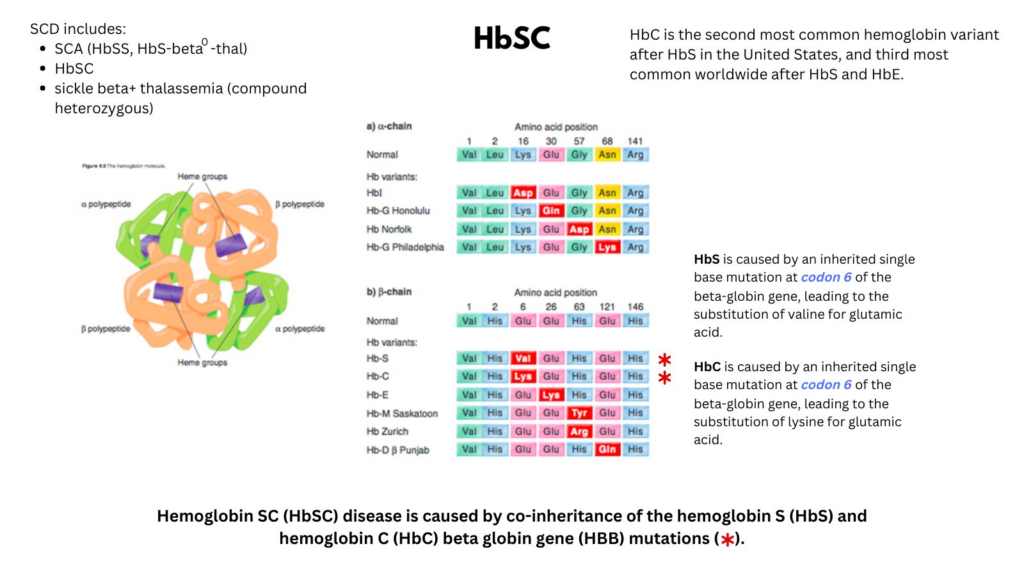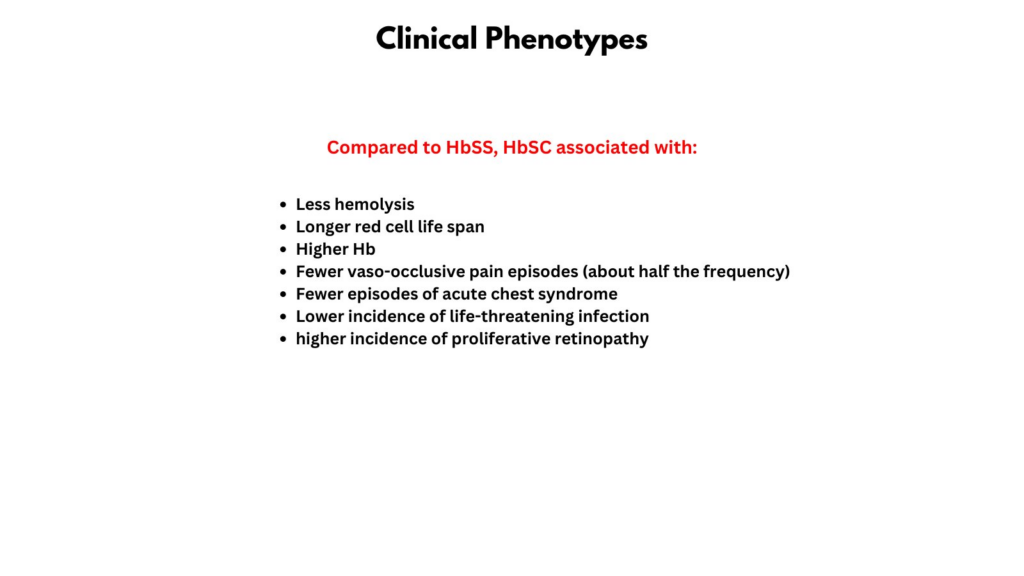1. HbSC disease is caused by co-inheritance of the hemoglobin S (HbS) and hemoglobin C (HbC) beta globin gene mutations.

2. HbC is the second most common hemoglobin variant after HbS in the US, and third most common worldwide after HbS and HbE. HbC Confers protection against severe malaria.
3. HbSC accounts for 30% of sickle cell disease (SCD) in the US and UK.
4. Pathophysiology of HbSC disease involves:
- RBC dehydration leading to increased HbS concentration and sickling under deoxygenated conditions.
- HbC crystallization under oxygenated conditions.
- Increased blood viscosity.

5. Compared with HbSS, HbSC is associated with higher Hb (often normal), microcytosis and elevated MCHC.
CAUTION: Inappropriate use of simple transfusions may cause hyperviscosity in patients with HbSC. Exchange transfusions are often required to reduce HbSC levels.

6. HbSC disease usually presents less frequently with clinical events when compared to HbSS disease. The one notable exception is retinopathy which is more common in patients with HbSC disease.

